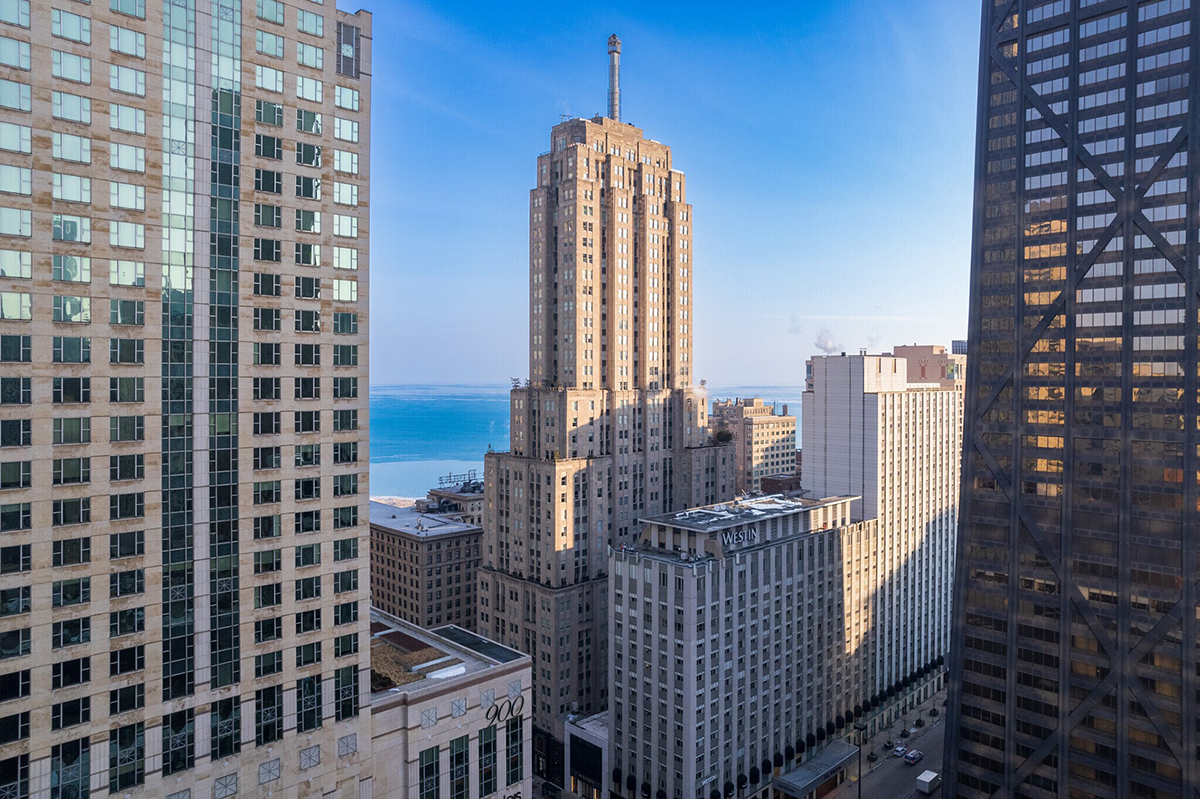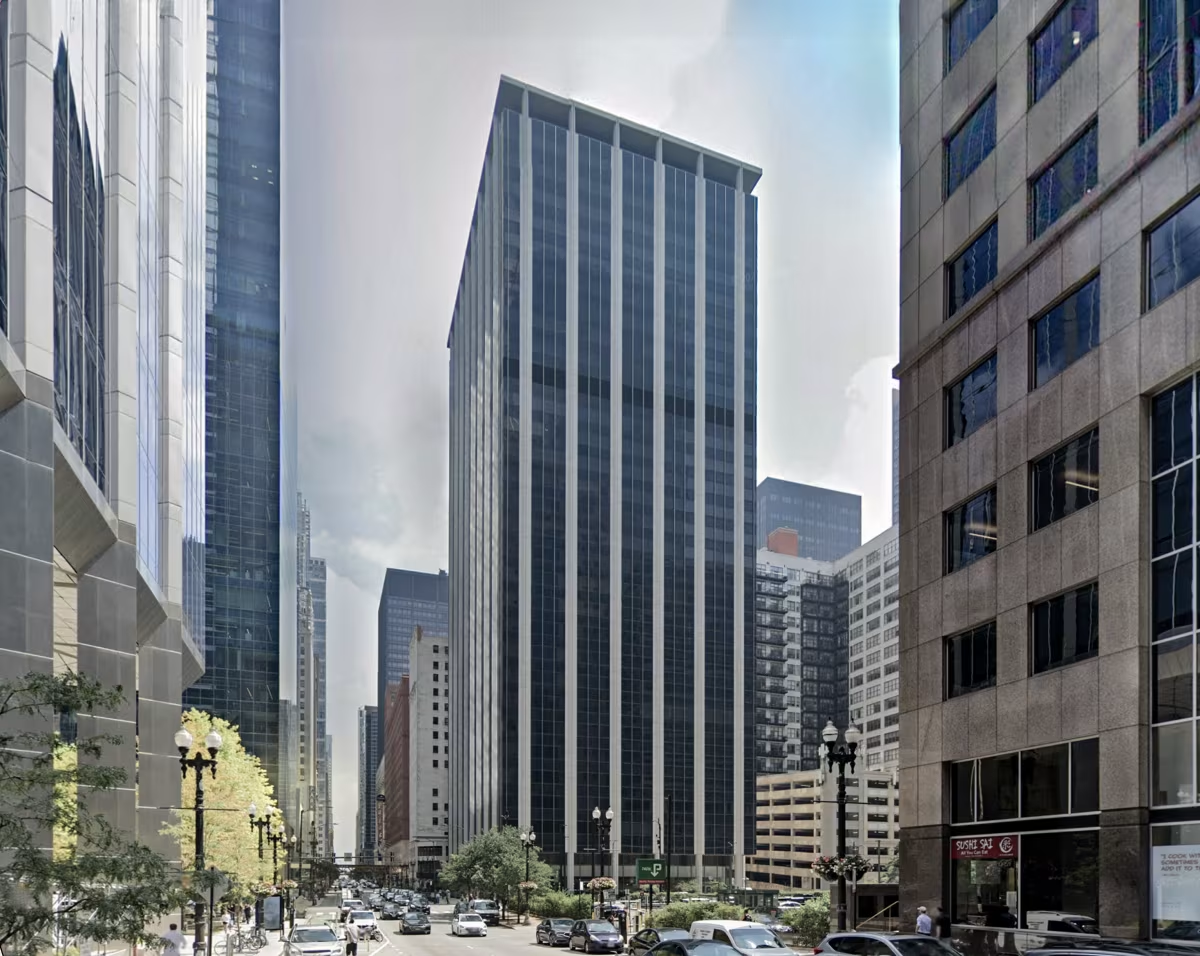Palmolive Building vs The Bell Building


Comparing the Palmolive Building and the The Bell Building is particularly interesting because they share the same skyline in Chicago, IL, and were both designed by Holabird & Root. However, they were completed more than 37 years apart.
This offers a unique perspective on how the architect's style and the city's architecture evolved over time.
Height & Size
The Palmolive Building is clearly the larger tower of the two, both in terms of height and number of floors. It rises to 564ft (172m) with 37 floors above ground, while the The Bell Building reaches 427ft (130m) with 31 floors above ground.
Of course, each project may have faced different briefs or regulatory constraints, which we don't really know about and could also explain the outcome.
Architectural Style
The Palmolive Building was designed in the Art Deco style, while the The Bell Building reflects the principles of Modern.
The The Bell Building represents a late expression of the Modern, a style already in decline in 1966 when it was completed. By contrast, the Palmolive Building followed the then mainstream Art Deco, embodying the dominant architectural direction of its time.
With 37 years between them, the comparison also reflects how quickly architectural priorities can shift from one dominant language to another.
Uses
The Palmolive Building is primarily residential, while the The Bell Building is primarily .
However, both of them have shifted purpose since their completion. The Palmolive Building evolved from commercial to residential, while the The Bell Building moved from commercial to .
The Palmolive Building offers 102 residential units.
Structure & Facade
The two buildings opted for different structural and facade solutions.
The Palmolive Building uses a Frame system, which relies on a regular grid of columns and beams to sustain its weight, while the The Bell Building uses a Framed Tube In Tube system, that combines a strong central core with a perimeter tube of columns.
And when it came to the facade, the Masonry went with a Masonry facade, which features a heavy masonry skin that gives it a more clasical look, while the The Bell Building opted for a Curtain Wall facade, that uses a lightweight glass curtain wall hung from the structure.
| Palmolive Building | The Bell Building | |
|---|---|---|
| Holabird & Root | Architect | Holabird & Root |
| 1927 | Construction Started | 1963 |
| 1929 | Year Completed | 1966 |
| Art Deco | Architectural Style | Modern |
| Commercial | Original Use | Commercial |
| 37 | Floors Above Ground | 31 |
| 172 m | Height (m) | 130 m |
| Frame | Structure Type | Framed Tube In Tube |
| Steel | Vertical Structure Material | Steel |
| Concrete | Horizontal Structure Material | Reinforced Concrete |
| No | Facade Structural? | Yes |
| Verne O. McClurg | Structural Engineer | Frank Henderson |
| IL | State | IL |
| Chicago | City | Chicago |
| 919 North Michigan Avenue For The Commercial Spaces, And 159 East Walton Place For The Residences | Address | 225 W. Randolph St |